This post is by Nathalie Ross, Heid Fellow, on her research in the Janice Bluestein Longone Culinary Archive. Nathalie is a doctoral candidate in the History Department at the University of North Texas, specializing in Jewish Food Studies.
**************************************************************************
My doctoral research on the history of Jewish American cookbooks led me to the Janice Bluestein Longone Culinary Archive in the U-M Library’s Special Collections Research Center, where I spent several days examining vintage, and out of print, early 20th century Jewish cookbooks during the week of November 6th, 2023.
My primary interest as a Jewish food historian is in Sephardic American foodways and understanding how Sephardic recipes have become part of the larger Jewish American canon of recipes, if at all. While at the Special Collections Research Center I had an opportunity to examine Lady Montifiore’s The Jewish Manual, or, Practical Information in Jewish and Modern Cookery: With a Collection of Valuable Recipes & Hints Relating to the Toilette, widely considered the first print, Anglo-Jewish cookbook. As a Sephardic Jew living in London, Mrs. Montefiore included a variety of Kosher recipes in her book, aimed at middle-class Jewish housewives who would undoubtedly be responsible for entertaining non-Jews. Her recipes are meant to mimic many traditional French and English recipes yet stay true to the principles of Kosher observance. Since my area of focus is the U.S., I am particularly interested in understanding if the many Sephardic recipes and styles of cooking that Mrs. Montefiore includes in her text are replicated in American community cookbooks.
Mrs. Montefiore has many classic Sephardic recipes (many originating from the Iberian Peninsula) such as escabeche (p.39), a fish dish cooked in vinegar, reminiscent of Ceviche which Dr. Helene Jawhara Piner explains appears in the trials and testimony of the Spanish Inquisition where food was used to prove Jewishness.(1) Mrs. Montefiore’s text includes several pastries and sweets, as well as a distinctive Sephardic cake known as the Bola D’Amor with its variations more rich variations, Bola Toliedo and Bola Hispaniola (p. 114-116). My examination of early Jewish American cookbooks specifically looked for Bola recipes as a measure of Sephardic content.
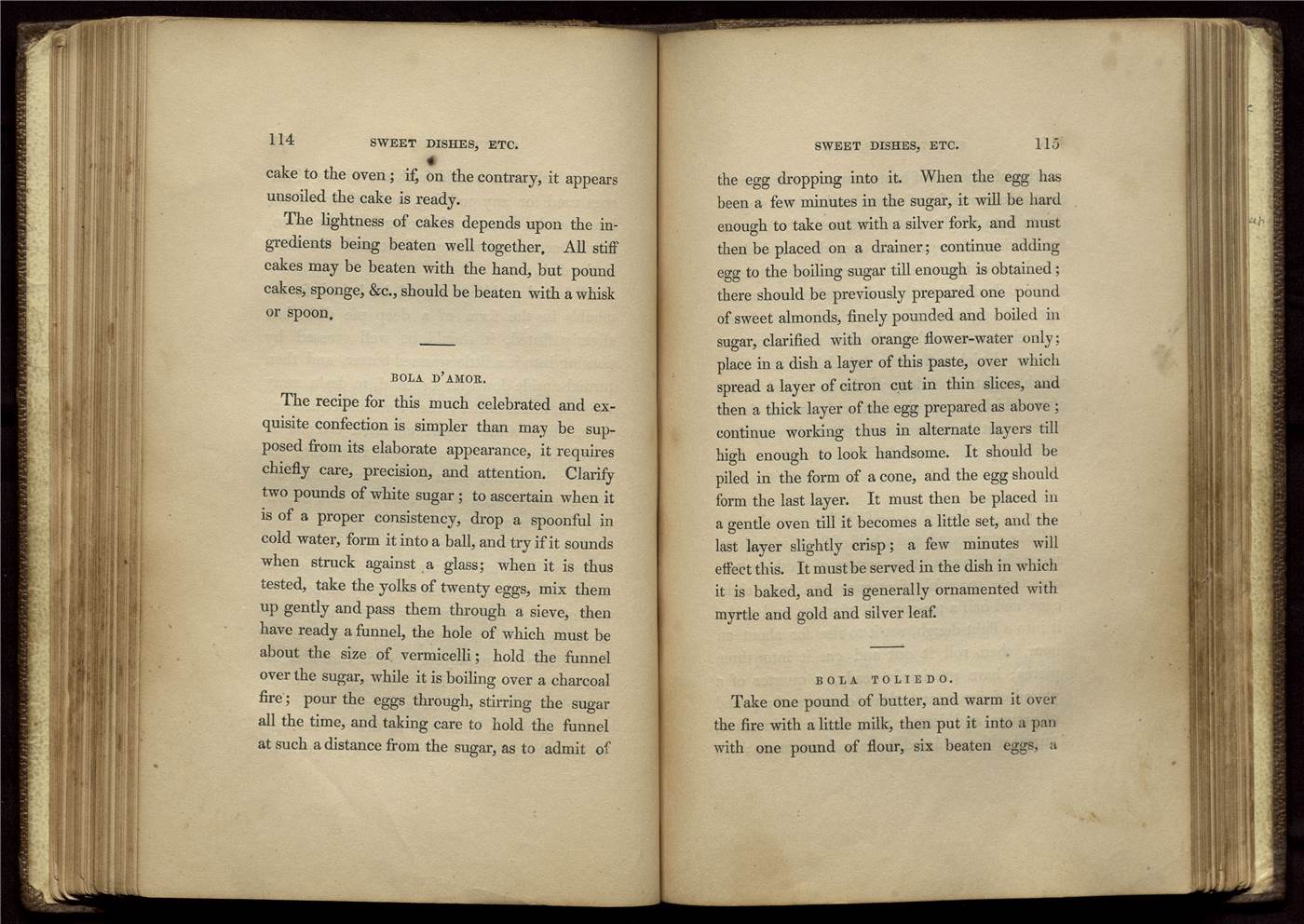
The Jewish Manual...(1846) by Lady Judith Cohen Montefiore

The Jewish Manual...(1846) by Lady Judith Cohen Montefiore
My examination of over two dozen early 20th Century Jewish American cookbooks overwhelmingly revealed that these texts are highly assimilated, with many including chapters dedicated to shellfish and pork—a traditional prohibition in Jewish cookery. Of the texts I examined, the only community cookbook that contained a Bola recipe was another Anglo-Jewish cookery text penned by Mrs. J. Altrutel titled An Easy and Economical Book of Jewish Cookery: Upon Strictly Orthodox Principles published roughly 25 years after Mrs. Montefiore and heavily influenced by her recipes.
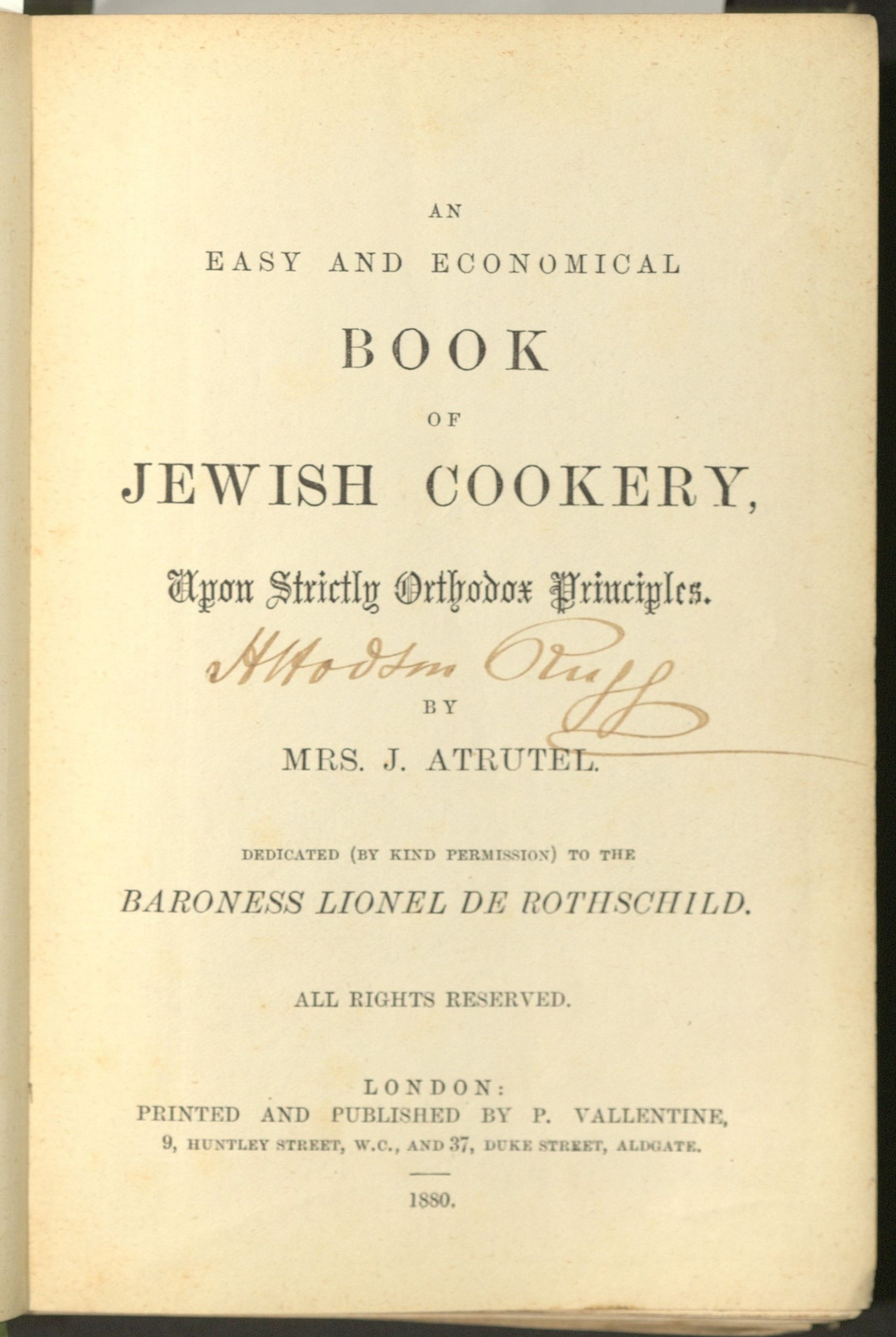
An Easy and Economical Book of Jewish Cookery Upon Strictly Orthodox Principles (1880) by Mrs. J. Atrutel

Recipe for Bola d'Amour from An Easy and Economical Book of Jewish Cookery (1880) by Mrs. J. Atrutel
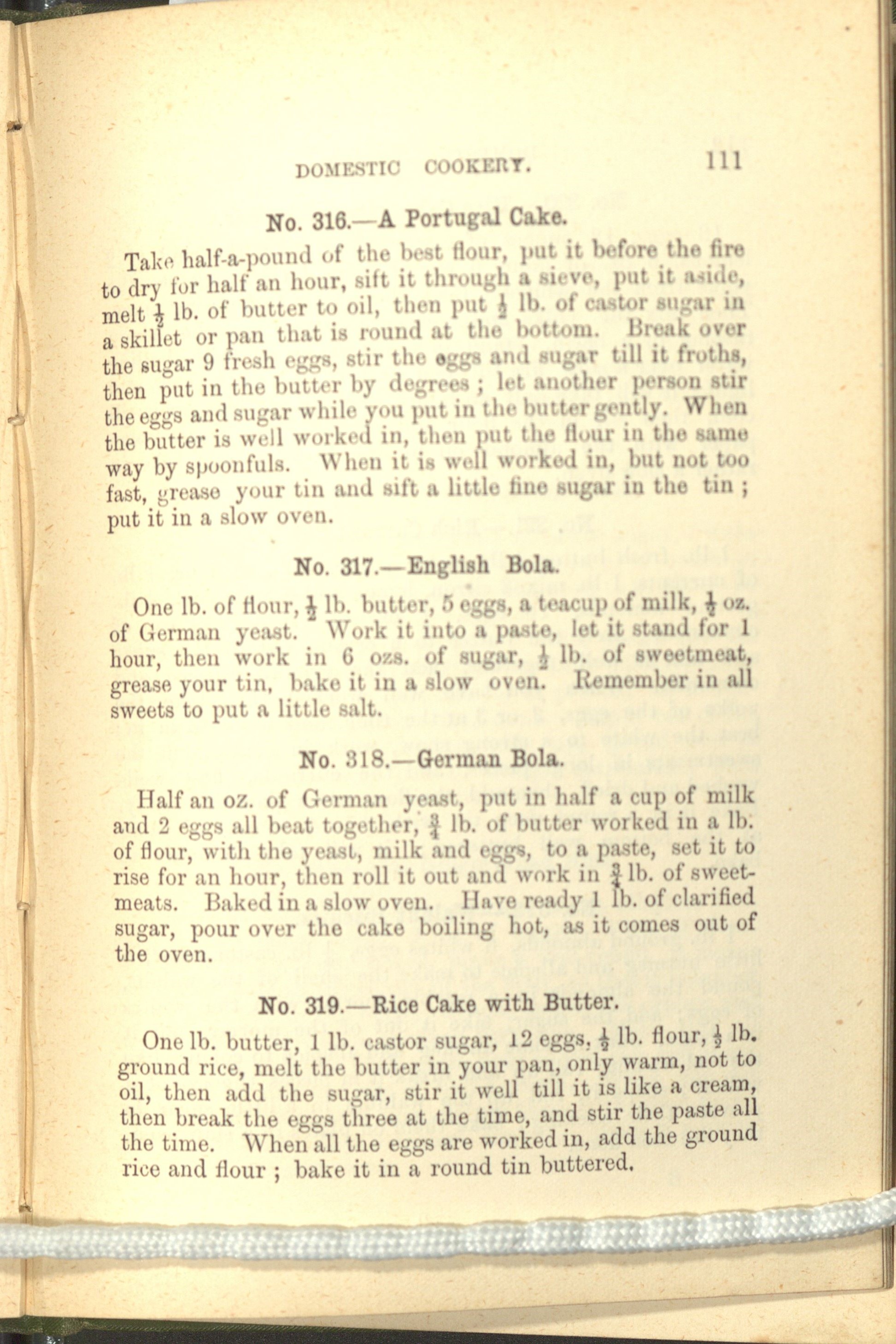
Recipes for English Bola and German Bola from An Easy and Economical Book of Jewish Cookery, Page 111.
I did nonetheless find several cookbooks that featured Sephardic content alongside American and Eastern European recipes. In the early 20th Century, it was common to denote Sephardic recipes by their geographic provenance on the Iberian Peninsula or Levant. Recipes were often distinguished from American or Ashkenazi fare by having “Spanish” or “Portuguese” in the title or by referencing the dish’s country of origin. Seattle and Washington State’s first Jewish cookbook, published in 1908, is a good example of a cookbook with a wide range of non-Kosher and Americanized recipes that also includes several dishes often found in Sephardic cuisine. Seattle has a prominent Sephardic community and while it is unlikely that there was much assimilation with Ashkenazi Jews in the early 20th Century, many Sephardi would have affiliated with their countrymen and their cuisines would have reflected that. Dishes such as Spanish Rice, Spanish Pudding and others found in One Thousand Favorite Recipes reflect the preference for identifying Sephardic dishes by their provenance.

One Thousand Favorite Recipes (1908) compiled by Mrs. Sigismund Aronson, Mrs. William Gottstein under auspices of The Ladies' Auxiliary to Temple de Hirsch
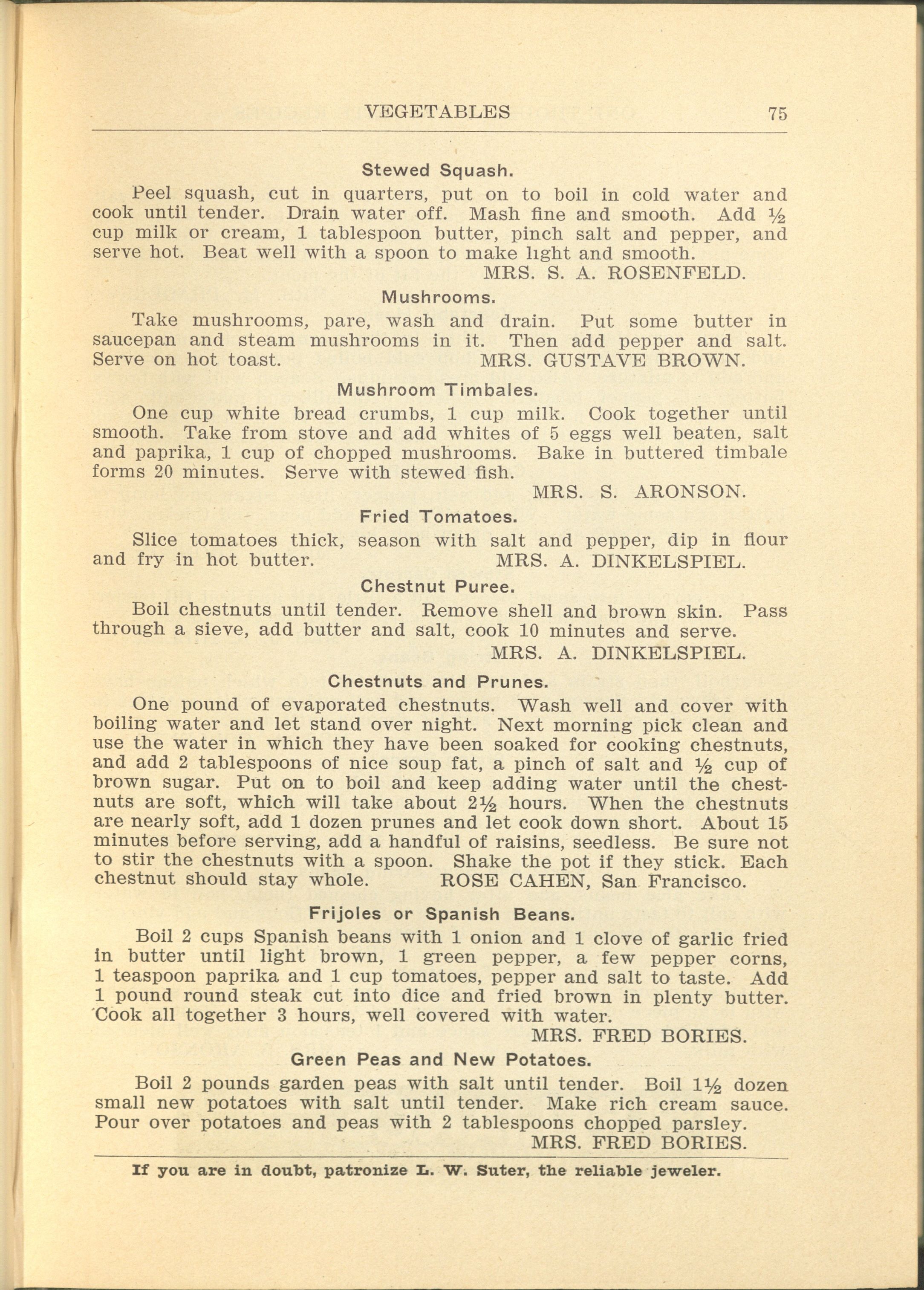
One Thousand Favorite Recipes (1908) compiled by Mrs. Sigismund Aronson, Mrs. William Gottstein under auspices of The Ladies' Auxiliary to Temple de Hirsch, Page 75
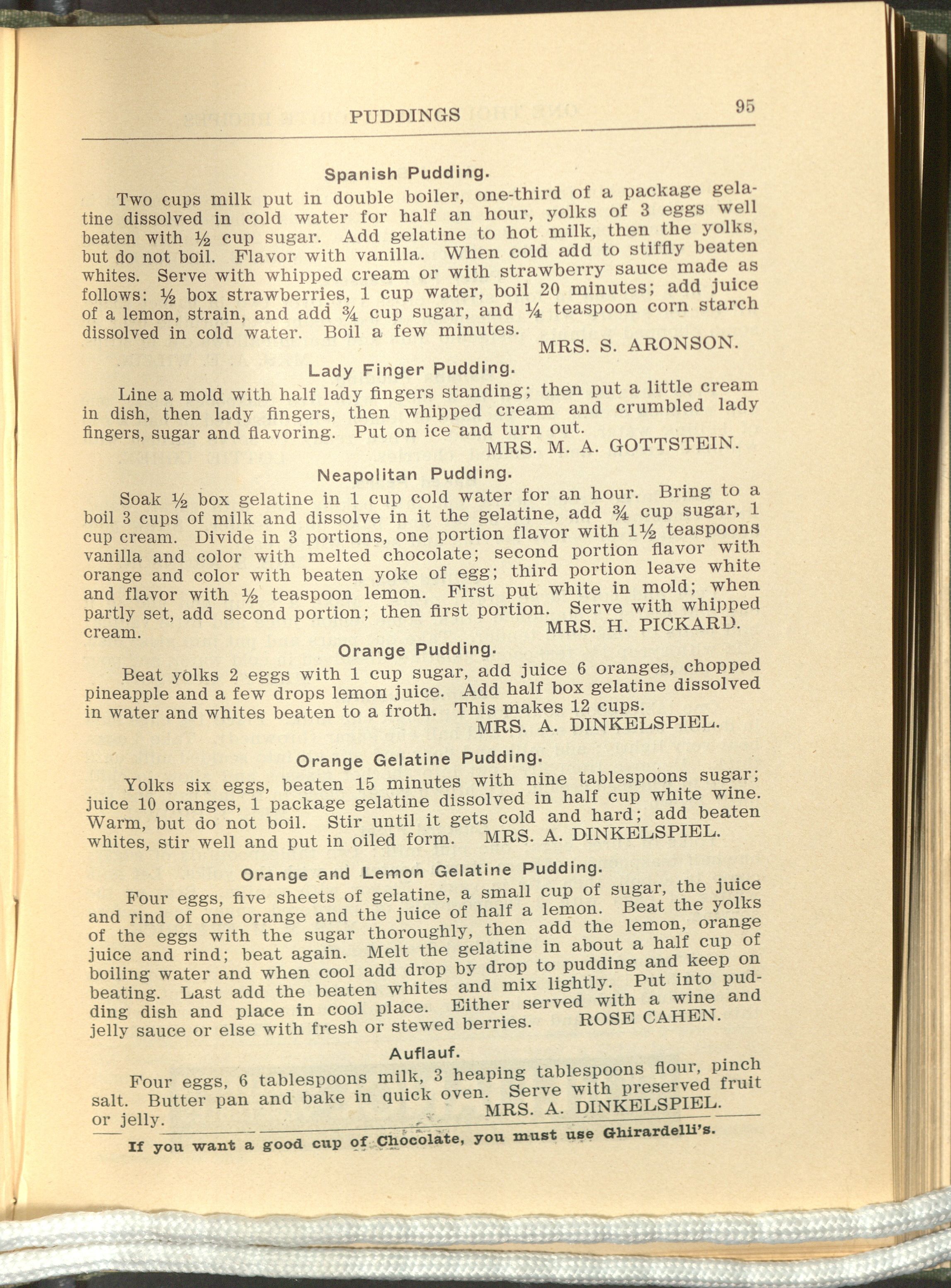
One Thousand Favorite Recipes (1908) compiled by Mrs. Sigismund Aronson, Mrs. William Gottstein under auspices of The Ladies' Auxiliary to Temple de Hirsch, Page 95
Similarly, New York’s West End Synagogue Sisterhood published The Practical Cookbook in 1910 and a few scant recipes appear to be Sephardic, such as the Turkish Cream dessert and especially the Impanada (p. 12), a recipe that first appears in Lady Montefiore’s Jewish Manual on page 45 and is similarly prepared here indicating a preference for halibut. The updated version omits pastry crust and adds “catsup,” but the dish retains its original preparation of fish and sliced potatoes and can be recognized in Sephardic cooking.
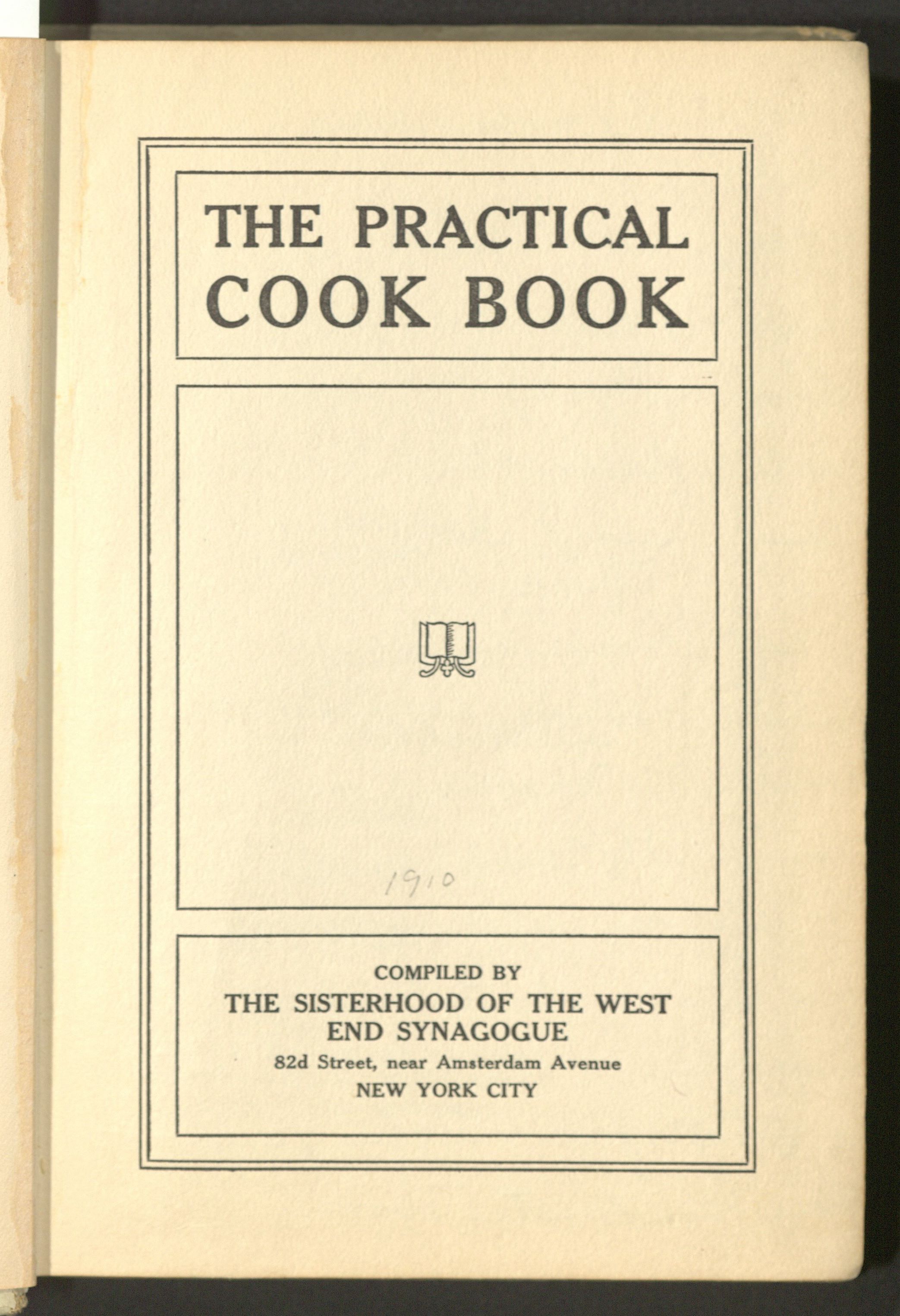
The Practical Cook Book (1910) compiled by the Sisterhood of the West End Synagogue.
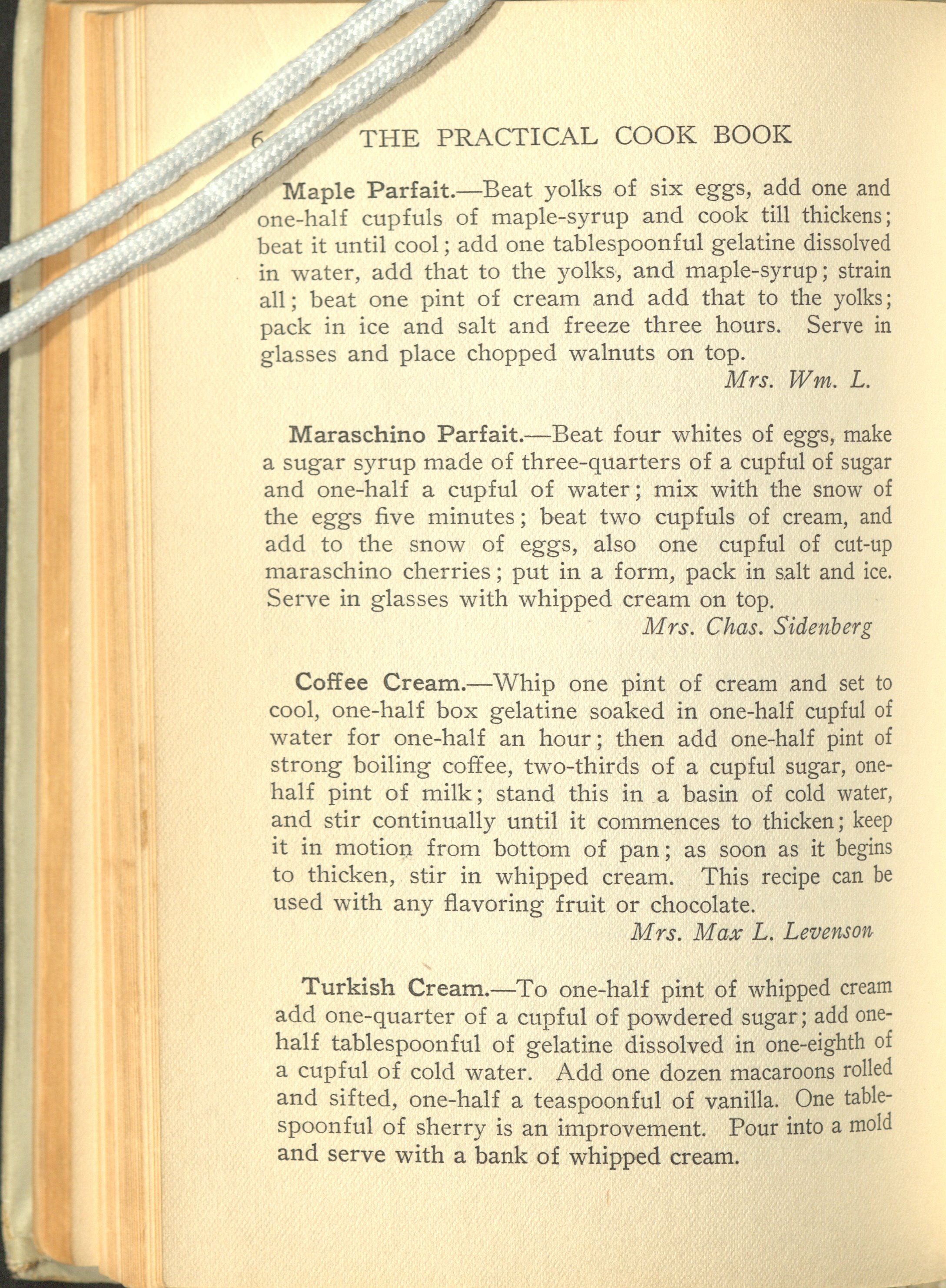
The Practical Cook Book (1910) compiled by the Sisterhood of the West End Synagogue.
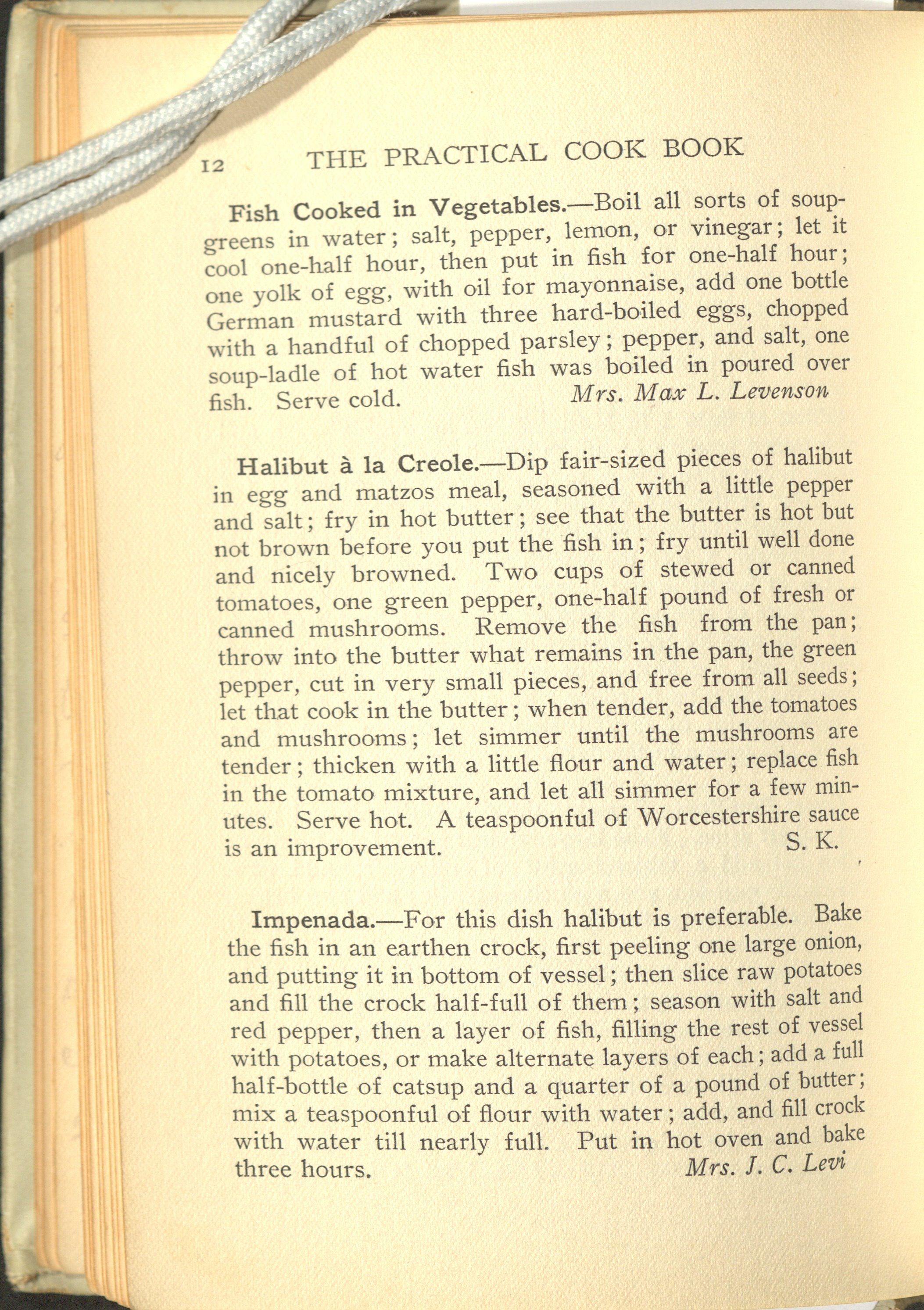
The Practical Cook Book (1910) compiled by the Sisterhood of the West End Synagogue.
The majority of cookbooks I examined made no mention of any Sephardic recipes except for the occasional Spanish Rice. It was customary in cookbooks found in the later half of the 20th Century to identify non-Ashkenazi recipes as Sephardic, such as “Sephardic Charoset” or “Sephardic Meatballs.” San Francisco’s Temple Emanu’el 1937 cookbook, Soup to Nuts: Cookbook for Epicures, published almost a century after Lady Montefiore’s Jewish Manual, reflected the cosmopolitan nature of the city and its Jewish residents. The newly constructed Golden Gate Bridge (1937) and the anticipated World’s Fair in 1939, attracted many immigrants, some of them Sephardic, to work the booths and represent their countries. During the prewar period, we see many cookbooks with “orientalized” versions of recipes to elicit the flavors of Egypt or Turkey that could be found in the popular World’s Fair and Expos at the time. These countries were marketed as exotic and far-flung with belly-dancers or the Great Pyramids, and reinforced the non-native nature of the foods, goods, and locales featured. Soup to Nuts is a good example of such a cookbook. It includes several international recipes such as Beef Spanish Ribs (p.113), Ghoulash (p. 106), Italian Chicken (p. 122), as well as Eggs Sultana (p. 64) and Egyptian Cake (p.16). These cookbooks are a glimpse of Jewish American life in the early 20th Century and help to illustrate how Sephardic identity is understood, maintained, and strengthened in the American diaspora.
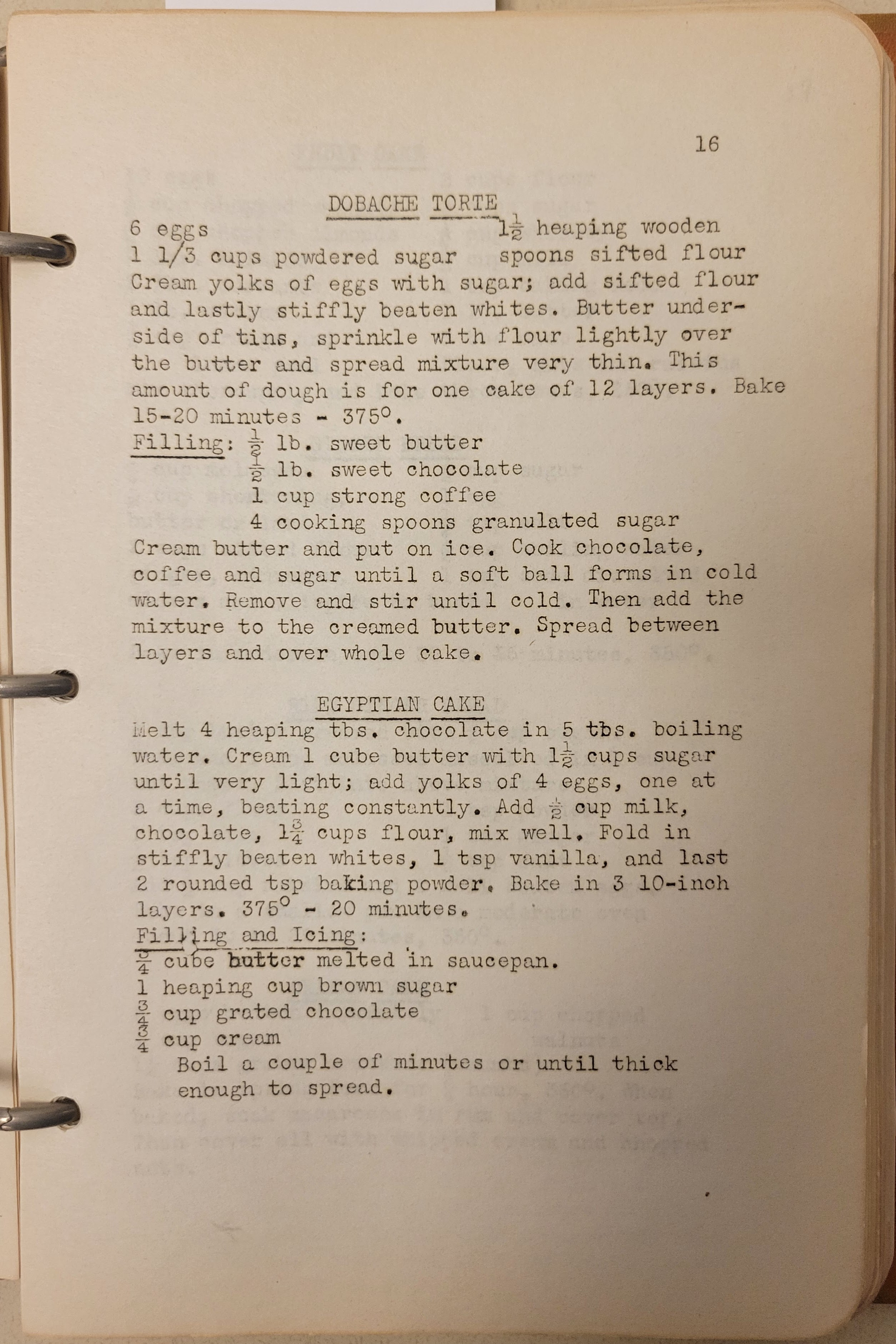
Soup to Nuts: Cook Book for Epicures (1937) by the Emanu-El Sisterhood of San Francisco
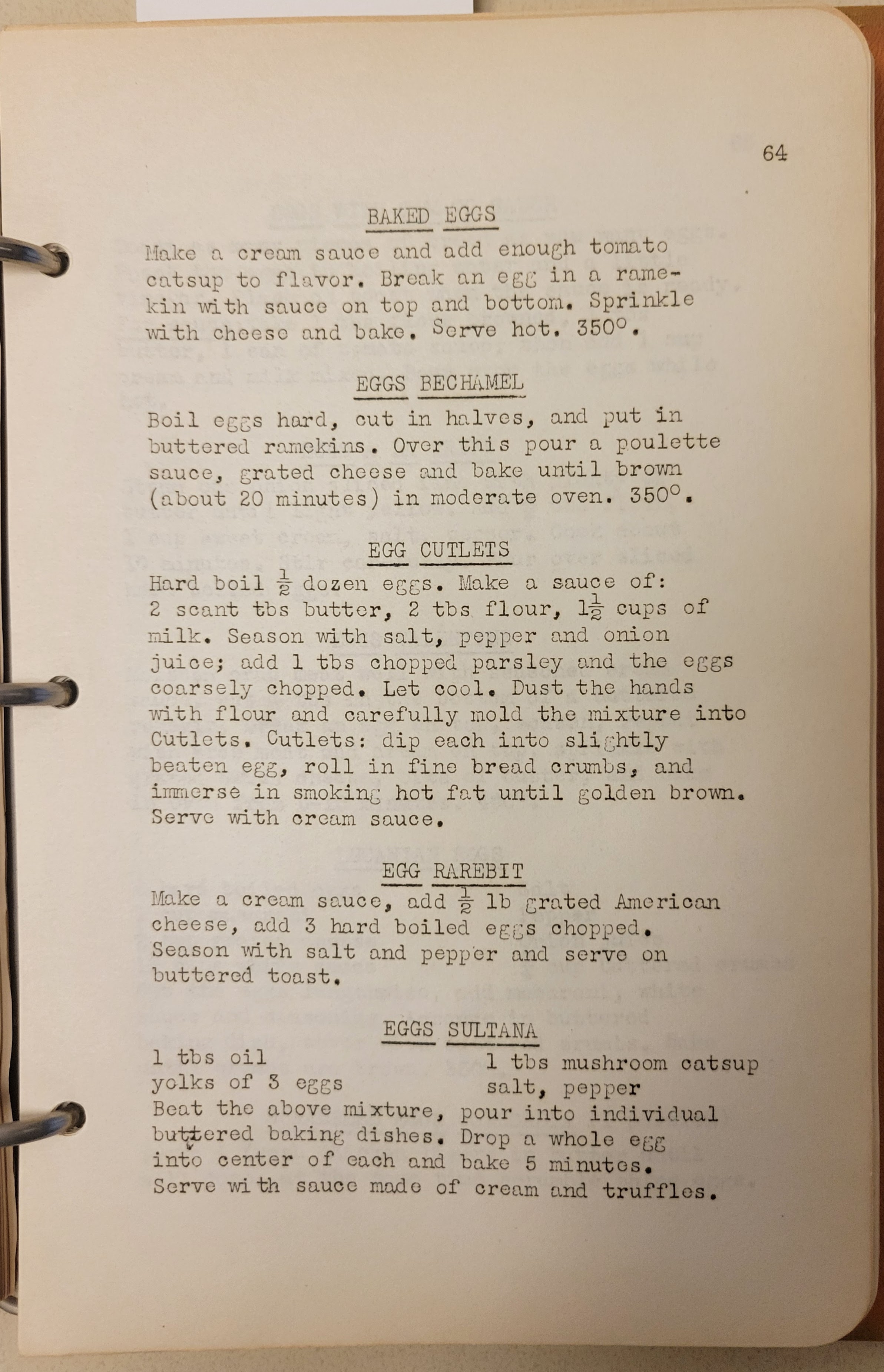
Soup to Nuts: Cook Book for Epicures (1937) by the Emanu-El Sisterhood of San Francisco
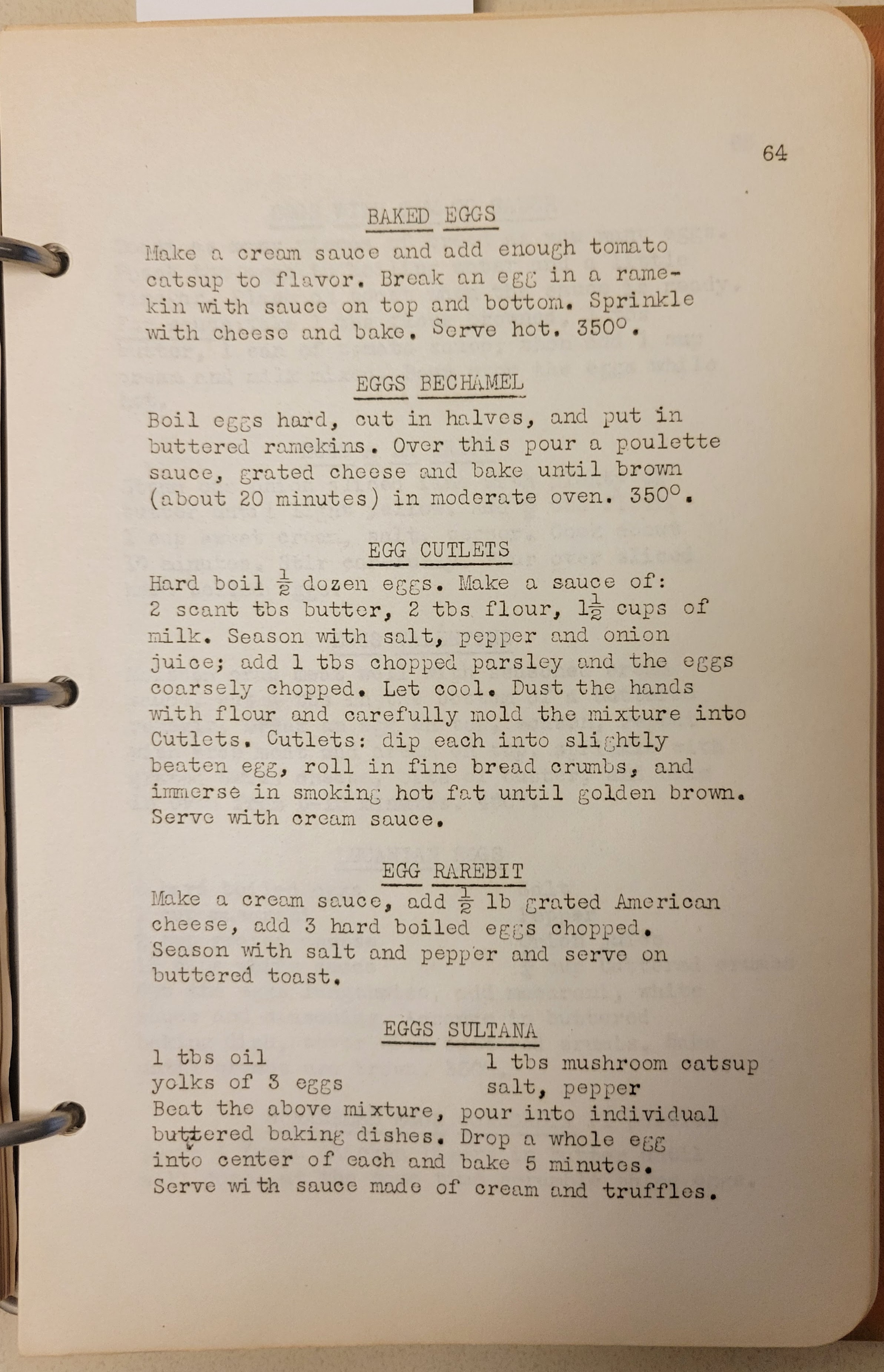
Soup to Nuts: Cook Book for Epicures (1937) by the Emanu-El Sisterhood of San Francisco
****************************************************************************
(1) Piñer, Hélène Jawhara. Sephardi: Cooking the History: Recipes of the Jews of Spain and the Diaspora, from the 13th Century to Today. Cherry Orchard Books, an Imprint of Academic Studies Press, 2022.